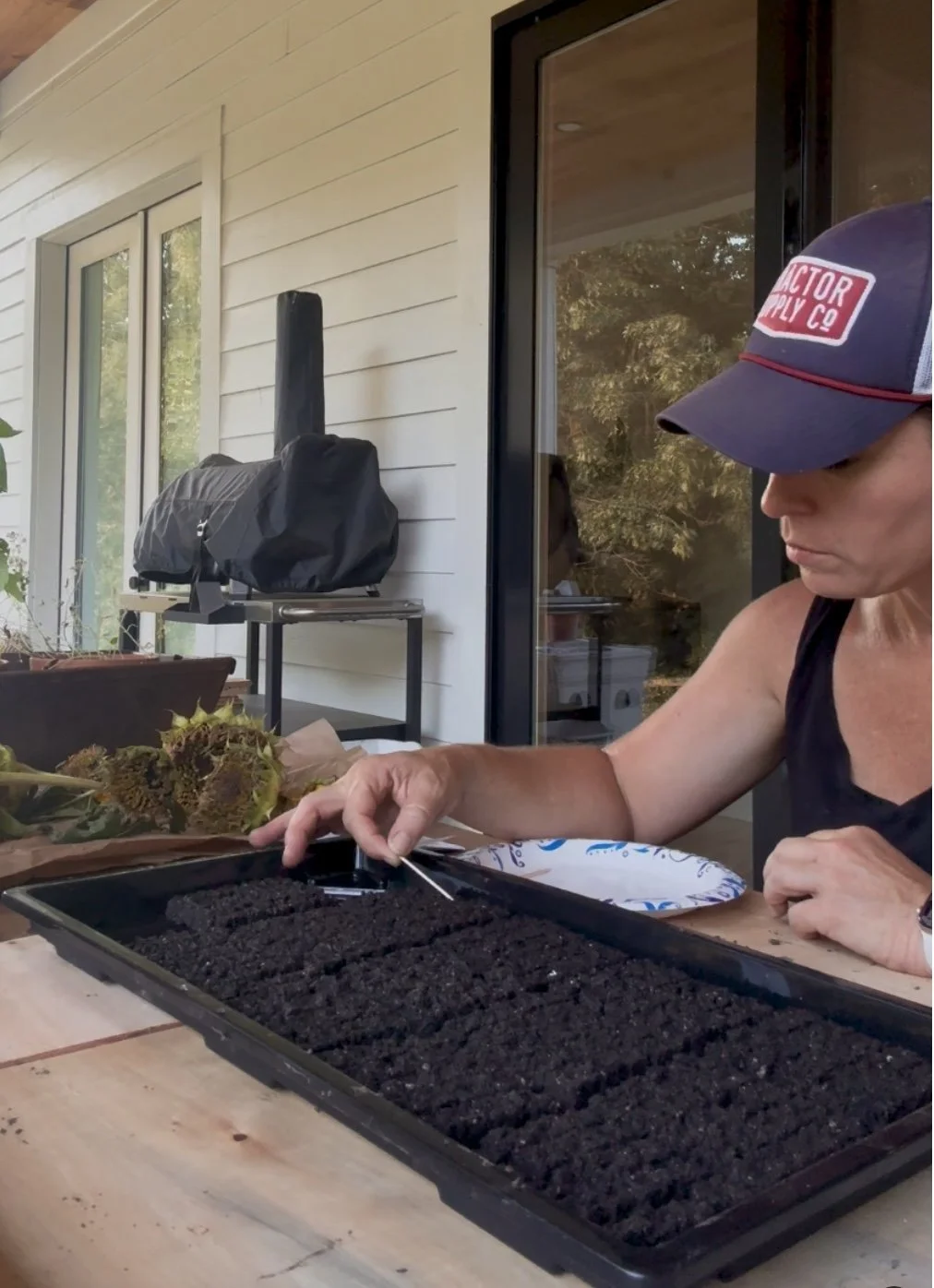Planting Cool Flowers in Fall: Reviving the Old Ways at Roots & Rescues Blooms
As the fields quiet down and the air turns crisp, most people think gardening season is winding down. But here at Roots & Rescues, the work is just getting started.
This is the second post in my From the Ground Up series — last time, I shared about building the new beds that will anchor the farm. Now, some of those beds are ready for their first big test: fall planting — and with it, the beginning of my very first full year of blooms.
Fall planting might sound like I’m confused — and, honestly, I often am 😉 — or like something out of old gardening folklore. But in a way, that folklore had it right. For generations, farmers and gardeners planted certain “cool” crops in the fall to give them a head start on spring. They knew that while the surface might look still, roots were quietly gaining strength beneath it. It’s a rhythm that’s easy to forget in modern gardening, where most of us are conditioned to start just about everything in spring.
I first learned about this method through Lisa Mason Ziegler’s Cool Flowers course, which revives that old wisdom and couples it with modern science. The more I study it, the more I realize — those “old ways” have a point.
Why Fall Planting Still Works
Here in Zone 7a, fall offers something special: warm soil and cool air — the perfect combination for root growth. As temperatures drop, the plants move most of their energy underground, building strong, resilient roots that begin the foundation of next spring’s blooms.
It’s the kind of slow, steady progress that doesn’t make for exciting social posts — but it’s everything.
And while the science is solid, the spirit of it feels a little nostalgic and timeless. Our ancestors planted in rhythm with the seasons, trusting nature’s pace. Fall planting is a small way of returning to that — a slower, more intentional kind of growing that rewards patience.
Timing (and Trusting the Process…Especially for a First-Timer)
The general rule is to plant out about five to six weeks ahead of your first frost. This gives roots time to establish before winter sets in. But you also can’t plant too early — if it’s too warm, you’ll trigger blooms this year instead of next. Think Goldilocks: not too hot, not too cold… just right.
I pushed that timing a bit close this year. In addition to the five to six weeks in the ground, I needed to account for another four to five weeks of growth indoors, since I plant everything from seed — and a handful (like snaps and Calendula) do best when started inside.
I’m keeping an eye on the forecast, and if we dip into colder temps too soon, I’ll be ready to add low tunnels to stretch the season just enough to give the babies a little extra protection.
For my first real season of blooms, I’m learning that timing isn’t everything — but it’s close.
What are the Cool Flowers Anyway?
This fall, I’ve started experimenting with several hardy varieties that can handle the chill and bloom early next year — a mix of hardy annuals and perennials that don’t mind a little Kentucky chill:
Larkspur (annual)
Delphinium (perennial — while related, apparently not the same thing as larkspur!)
Poppies (all kinds)
Corn Cockle
Bachelor’s Buttons
Yarrow
Snapdragons
Scabiosa
Calendula
Bells of Ireland
Nigella
Purple Carrot
Forget-me-Nots
Wildflower Mix
They’re sewn into freshly prepped beds — tilled, composted, and fertilized with the smelliest organic mix imaginable. (Smelly must mean it’s good, right?). I’ll be sending another round of soil samples for testing soon to see what’s working and what might need adjusting, especially since we’ve done a bit of dirt work lately.
What I’m Learning
Honestly, it still feels like everything. This process feels like standing somewhere between the old and the new — honoring the seasons and traditional rhythms of nature while learning the “why” and science behind them.
Fall planting has already reminded me that flower farming isn’t just about taking care of the plants. It’s about paying attention — and planning, adjusting, and documenting (fortunately, the kind of thing I’ve been training for my entire professional life).
There’s still so much I don’t know, but that’s part of what makes it fun and interesting.
Looking Ahead
Over the next few months, while everything appears quiet above ground, the real work will be happening below— forming roots and preparing for an early show next spring—and at my dining room table.
In the next From the Ground Up post, I’ll share more about the plan and design (and maybe a few sketches as well). Until then, thanks for following along as I learn, experiment, and discover some of the old ways that still work best.

